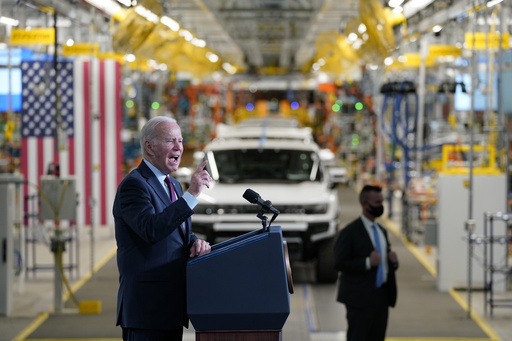
As President Joe Biden’s presidency nears its conclusion, there has been a surge of misinformation circulating on social media, falsely asserting that his administration has expended billions on merely a few electric vehicle charging stations. Notably, these claims have been echoed by various prominent figures, including sitting members of Congress.
These assertions mischaracterize the funding that was established under the 2021 Infrastructure and Jobs Act, also recognized as the Bipartisan Infrastructure Law, which aims to create a comprehensive network of publicly accessible electric vehicle chargers across the nation. President Biden has set an ambitious target of establishing 500,000 such chargers by the year 2030.
Examining the specifics, the claim circulating implies that the Biden administration allocated $7.5 billion solely for eight electric vehicle charging stations. However, this is not accurate. The $7.5 billion is the total appropriation set aside through the 2021 law for the construction of a widespread charging network throughout the United States, and it does not reflect the amount already spent. Currently, there are 214 operational charging stations across 12 states funded by this law, with an additional 24,800 projects in progress nationwide, according to the Federal Highway Administration.
Charging ports supply electric power to one vehicle at a time via a connector, while charging stations can host multiple ports for various vehicles. Secretary of Transportation Pete Buttigieg labeled the online claims as “false” through multiple posts on social media platform X. He clarified that the $7.5 billion has not been expended, asserting that federally financed chargers are developed by the individual states rather than the federal government, with most projects projected to be finished in the latter half of the 2020s.
The total allocation of $7.5 billion consists of $5 billion designated for the National Electric Vehicle Infrastructure Formula Program (NEVI), and $2.5 billion through the Charging and Fueling Infrastructure Discretionary Grant Program (CFI). NEVI funding is distributed annually based on a specific formula to transportation departments in all 50 states, including Puerto Rico and the District of Columbia, from 2022 through 2026, with funds remaining available until 2030. Moreover, each year, 10% of NEVI funding is reserved for states and localities requiring additional help.
On the other hand, CFI grants support regions through an application process and are intended for electric vehicle charging installations as well as alternative fueling infrastructure, particularly in underserved and disadvantaged communities. Republican Congressman Michael Rulli from Ohio recently reiterated the false claims that the entirety of the budget has already been committed. In an X post that garnered significant traction, he claimed that Buttigieg would exit his role after “spending $7.5 BILLION to build 8 EV charging stations,” characterizing it as wasteful spending amid widespread economic struggles.
As of early this year, only four states—Ohio, New York, Pennsylvania, and Hawaii—had installed stations financed by the Bipartisan Infrastructure Law, bringing the total to merely seven stations, as reported in March. Independent analyst Loren McDonald emphasized that assessing progress in building electric vehicle charging infrastructure varies significantly across states; some have extensive backgrounds in constructing such systems, while others encounter challenges. He cited Wisconsin, which needed to enact new legislation to align with federal standards.
McDonald noted that while the initiative is federally motivated, its success heavily relies on individual states. He suggested that criticism might be directed towards states with slower progress or at the design of the program itself, while implying that the federal government could enhance clarity on managing state projects more effectively.
According to the Federal Highway Administration, all 50 states, alongside Puerto Rico and the District of Columbia, have access to two rounds of NEVI funding amounting to nearly $2.4 billion. As of the recent update, 37 states can tap into a third round of funding, adding another $586 million. However, this indicates available capital for projects rather than expenditures incurred to date.
In total, there has been more than $1.3 billion allocated through CFI and NEVI, with $779 million currently available under both programs. These figures represent funds that can be utilized for future projects rather than money already spent. At present, the nation boasts over 203,000 publicly accessible charging ports, with almost 1,000 ports becoming operational weekly, fulfilling more than double the number from 2021. Additional funding avenues include federal tax credits and private sector investments.
